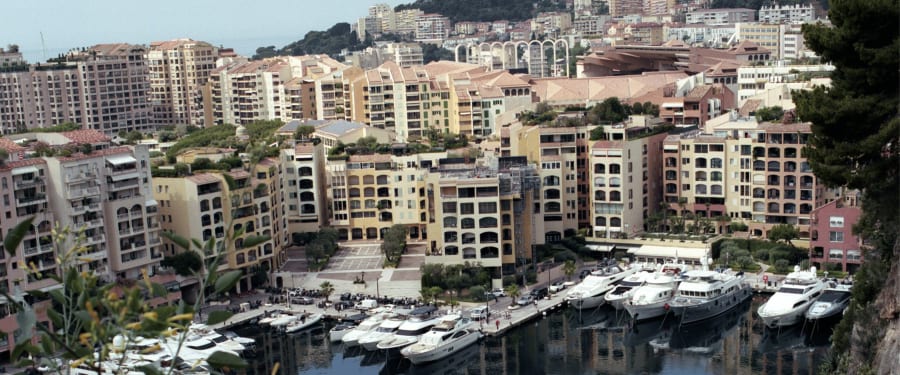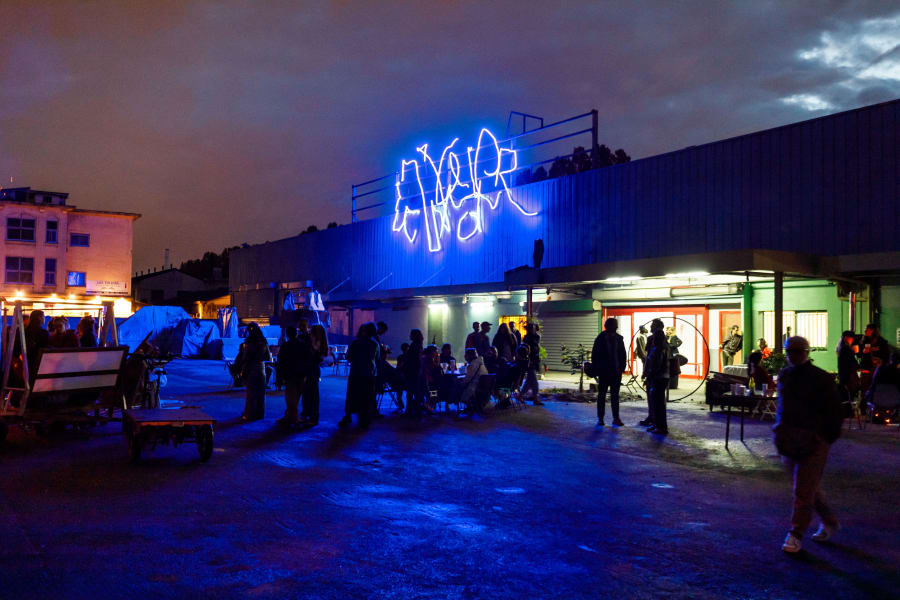In the narrow streets of Avignon, passersby seek shade as the mercury approaches 100 degrees. Behind the walls of a private mansion, the Lambert Collection offers a refreshing proposition: the exhibition ‘Even the Suns Are Drunk’ gives pride of place to the wind. Through August 31, visitors can discover classical and contemporary works that explore the relationship between local inhabitants and the mistral, such a strong feature of the region. There’s Flügel Klingen (2017), a piece by the Austrian artist Susanna Fritscher, which fills the room with sound through the rotation of tubes installed on the ceiling, and Fountains (2011) by the Lithuanian Zilvinas Kempinas, an installation composed of fans surrounded by hundreds of magnetic strips, creating the illusion of a continuous wind.
The exhibition’s title is borrowed from a text by Albert Camus, The Posterity of the Sun, co-written with the poet René Char—a true love letter to the Vaucluse, of which Avignon is the capital. Contemporary works dialogue with older ones, as well as with literary texts, from Guy de Maupassant to Emily Dickinson.
Upstairs, teams are bustling to finalize the exhibition ‘A Love Song’, for which the French artist Jean-Michel Othoniel has selected works from the Lambert Collection that have nourished his own work, and which are presented here alongside his own pieces. Among the works is a rare colored painting by the American Sol LeWitt, little known to the public. This piece from the collection is being shown for the first time, specially framed for the occasion.
‘Sol LeWitt created this work in the 1980s, when he moved to Italy with his wife,’ recounts Stéphane Ibars, the collection’s artistic director since 2006. ‘He then rediscovered Renaissance painting and color. But, at the time, his approach was poorly received in the art world, which was reluctant to accept that a conceptual artist would venture thus outside his territory.’ He adds, ‘That’s the richness of Yvon Lambert’s collection, which is made up of works by extremely well-known artists, created in moments of total freedom.’
The Lambert Collection celebrates its 25th anniversary this summer. And it all began with one man: the art dealer Yvon Lambert, a native of Vence in the South of France. In 1966, he opened a gallery in Paris. There he championed American artists whose practice focused on Minimalism and Conceptualism – going against the flow of the French scene at the time which was dominated by lyrical abstraction. ‘In France, his gallery received at lot of attention,’ explains François Quintin, who has been director of the collection since 2023.
Throughout his career, Lambert built a personal collection nourished by his encounters with artists. In 2000, he decided to donate 550 works to the French state. At the time, it was the most important gift since 1904, and it greatly enriched the holdings within French collections of American contemporary art. The city of Avignon made available two 18th-century private mansions, the Hôtel de Caumont followed by the Hôtel de Montfaucon. The Lambert Collection became a public museum, now recognized as a contemporary art center, with more than 40,000 square feet of exhibition space.
The arrival of the museum in 2000 upset the cultural habits of a city that was already well endowed with museums, such as the Musée Calvet or the Musée du Petit Palais, and known worldwide for its theater festival. Marie-Charlotte Calafat, head of collections and the documentary resources department at the Musée des Civilisations d’Europe et de la Méditerranée (Mucem) in Marseille, grew up in the region. She recalls, ‘I still have memories of school trips, of a real encounter with contemporary art. The collection had something very accessible about it. I would never have pursued the art studies I did, without these encounters with the collection.’
In 2024, Calafat organized the exhibition ‘Shared Passions’ at Mucem, a collaboration between the Marseille museum and the Lambert Collection, bringing together contemporary art and objects from Mucem’s popular arts collections. ‘This partnership allowed us to establish an important dialogue around the exhibition. There are still things to organize with other institutions, because culture transforms cities,’ analyzes Quintin.
Today, the museum’s teams
also support current creation. The Lambert Collection hosts European curators on
residencies and is developing a network of art centers across the continent. ‘We
are establishing a lasting legacy, which testifies to our commitment to
contemporary, living creation. We are not a museum frozen in time,’ insists
Quintin.
To shape its future, the Lambert Collection also relies on its connections with audiences, particularly those who are not close to museums. In the midst of teams bustling to finalize the last preparations before the opening of ‘A Love Song’, a little girl, sitting on the floor, applies herself to drawing in watercolor one of Othoniel’s works. Facing the blown-glass bricks, Fatima mixes shades of pink, to capture the brilliance of the glass. She holds out her drawing to Ibars and asks, ‘Do you think I could give it to Jean-Michel?’
Fatima is one of the students in the fourth- and fifth-grade class schooled year-round on the museum’s premises. At risk of dropping out, these children follow an adapted classical program, in an artistic environment. ‘On Mondays and Tuesdays, when the museum is closed, they work in the galleries, sitting on the floor,’ explains Quintin. And Ibars observes: ‘Children sitting on the floor in a museum – that breaks down barriers. It tells everyone: You have your place here.’
This summer, the collection is also preparing to open an art center in Avignon’s public nursing home. Artists, such as the visual artist Charly Aubry and the dancer and choreographer Thierry Thieû Niang, will be invited on residencies, in order to work with the elderly residents. As Quintin concludes, ‘The Lambert Collection is a pioneering place through its connection with society. Its projects exist nowhere else.’
Leïla Beratto is a journalist and filmmaker. She worked as a correspondent in Algeria for French-speaking media from 2012 to 2020. She is also co-founder of the online media platform 15-38 Méditerranée.
English translation: Art
Basel.
Caption for header image: Sol LeWitt, Wall Drawing #538, 1987. View from the Lambert Collection in Avignon. Courtesy of the artist’s estate and Lambert Collection.
Published on July 8, 2025.


